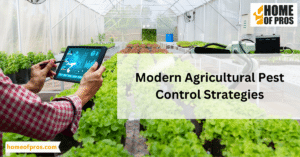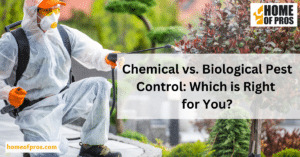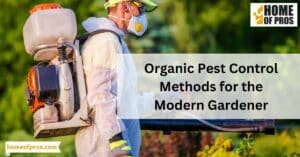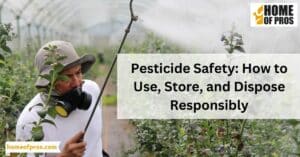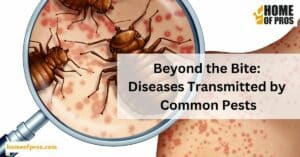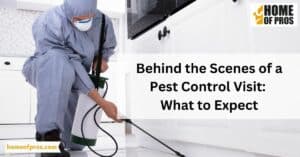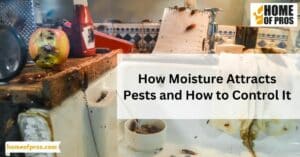To effectively prevent pests on a large scale, prioritize regular maintenance and inspections, maintain cleanliness and sanitation, and collaborate with pest management experts to develop a customized prevention strategy tailored to your facility’s specific requirements.
In a world where pests threaten agriculture, food processing, hospitality, and manufacturing, large-scale pest prevention is paramount. This article emphasizes the need for proactive approaches to safeguard these industries. Join us in fortifying your operations against these relentless intruders.
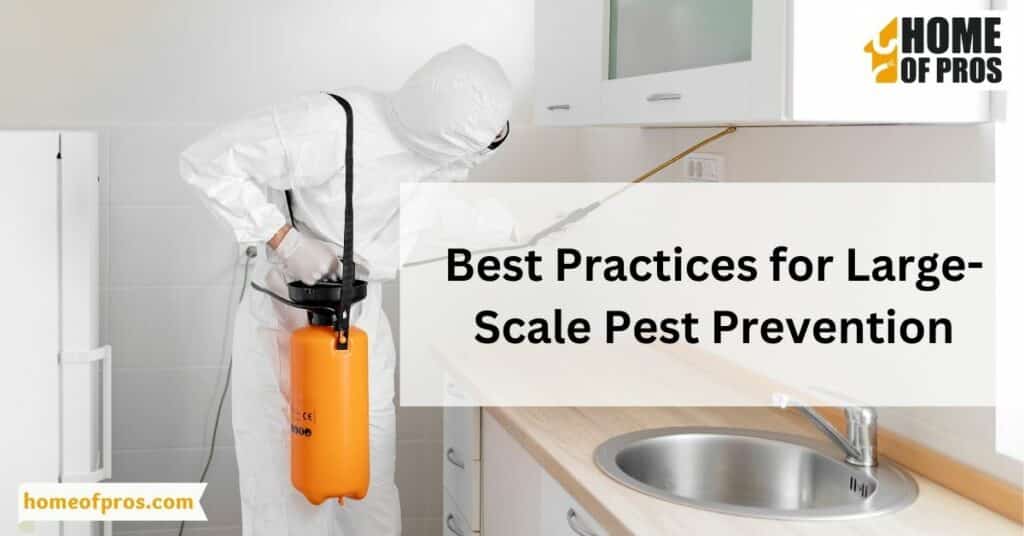
1. Regular Maintenance and Inspections
Regular maintenance and inspections are the bedrock of effective pest prevention in large-scale facilities. Proactive checks for signs of infestations are crucial, serving as an early warning system against potential pest threats. To conduct effective inspections, designate specific personnel responsible for this task, ensure they are well-trained, and establish a routine schedule.
During inspections, look for indicators such as droppings, gnaw marks, nests, or any unusual pest activity. Timely identification of issues allows for prompt intervention, minimizing the risk of infestations taking hold within your facility.
2. Maintaining Cleanliness and Sanitation
The relationship between cleanliness, sanitation, and pest prevention is inseparable. To deter pests effectively, adopt stringent practices for waste disposal, storage, and hygiene. Keep all areas clean and free of debris, promptly addressing any spills or messes. Properly store food items and supplies in sealed containers, reducing potential food sources for pests.
Additionally, decluttering workspaces and storage areas eliminate hiding spots for pests. By adhering to these best practices, you create an environment where pests struggle to find the sustenance and shelter they seek, making your facility less attractive to infestations.

3. Collaborating with Pest Management Professionals
Collaborating with pest management experts offers invaluable advantages in large-scale pest prevention. These professionals bring expertise to assess risks, develop tailored strategies, and provide ongoing support. They can conduct thorough inspections, pinpoint vulnerabilities, and recommend preventive measures specific to your industry.
Regular communication with pest management professionals is essential. This partnership ensures that preventive measures remain effective, adapting to changing pest pressures and emerging threats. By entrusting pest prevention to experts, you gain peace of mind, knowing that your facility is fortified against the relentless intrusion of pests.
4. Implementing Effective Pest Control Measures
Implementing effective pest control measures in large-scale facilities requires a multi-pronged approach. Consider pest-resistant building designs, sealing entry points, and using environmentally friendly pesticides. The pest-resistant building design incorporates materials and construction techniques that discourage pest entry.
Exclusion methods, such as sealing cracks and gaps, help create a barrier against pests. When using pesticides, opt for environmentally friendly options that minimize harm to non-target organisms and the ecosystem. Understand the pros and cons of different pest control techniques, tailoring your strategy to the specific pest challenges in your facility. A well-rounded approach to pest control maximizes effectiveness while minimizing environmental impact.
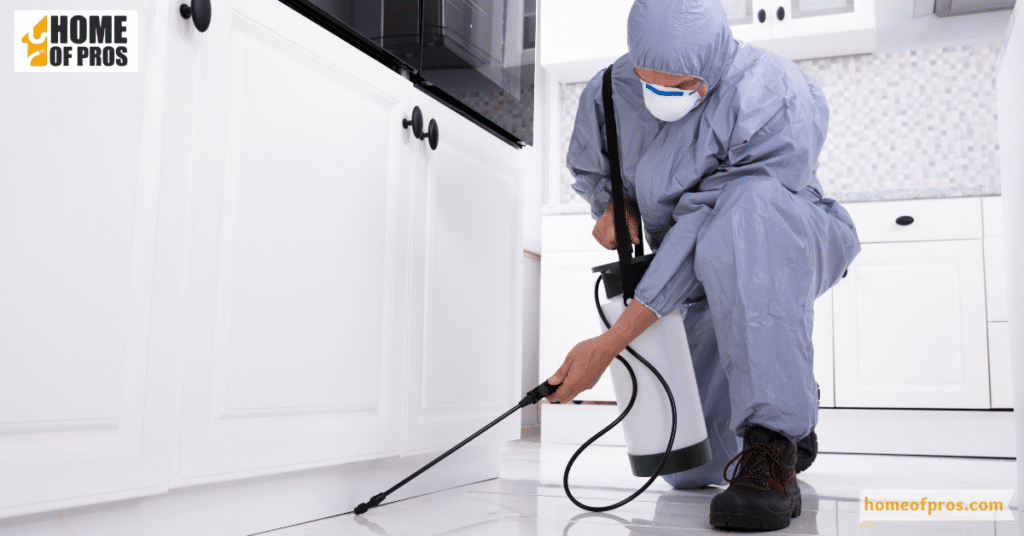
5. Monitoring and Continuous Improvement
Ongoing monitoring and evaluation are the keys to long-term pest prevention success. Regular data collection and analysis help identify trends and areas for improvement in your pest prevention efforts. Implement a system to track pest sightings, inspection results, and treatment effectiveness. Use this data to refine your prevention strategies.
Adjust tactics based on monitoring results, addressing emerging threats promptly. By embracing a culture of continuous improvement, your facility remains agile in responding to evolving pest challenges. Monitoring not only safeguards your facility against infestations but also contributes to operational efficiency and cost-effectiveness.
6. Employee Training and Awareness
Large-scale pest prevention is a team effort, and your employees play a vital role in this endeavor. Implement comprehensive training programs to ensure that every member of your workforce understands the importance of pest prevention. Educate them about the signs of potential infestations, emphasizing that early detection is key to effective control. Stress the significance of maintaining cleanliness and sanitation in their respective areas.
Empower your employees to actively participate in pest prevention by encouraging them to report any pest sightings or signs promptly. Establish clear reporting channels and protocols for swift action. An informed and vigilant workforce becomes an additional line of defense against pests infiltrating your facility.

7. Pest-Resistant Packaging and Storage Solutions
Pest-resistant packaging and storage solutions are essential components of large-scale pest prevention, safeguarding both raw materials and finished products. These innovative measures are designed to deter pests and maintain the integrity of your inventory. Consider utilizing packaging materials that are specifically designed to withstand pest incursions.
These may include sealable, airtight containers that prevent pests from accessing stored goods. Additionally, explore the use of materials impregnated with natural repellents or deterrent substances, making them unappealing to common pests.
8. Sustainable Pest Prevention
Embracing sustainable pest prevention practices not only safeguards your facility but also contributes to a healthier planet and aligns with the evolving preferences of eco-conscious consumers.
One key aspect of sustainable pest prevention is the exploration of eco-friendly alternatives to traditional pesticides. This includes the use of biological controls, where natural predators or parasites are introduced to regulate pest populations. Integrated pest management (IPM) techniques are another sustainable approach, emphasizing proactive strategies like habitat modification, monitoring, and targeted treatments to minimize pesticide use.

Conclusion
In conclusion, large-scale pest prevention is a vital undertaking for industries like agriculture, food processing, hospitality, and manufacturing. Regular maintenance, inspections, and cleanliness are the foundation of any successful pest prevention strategy. Collaborating with pest management professionals enhances your defenses, ensuring industry-specific solutions and ongoing support.
Implementing diverse pest control measures, along with continuous monitoring and improvement, secures your facility against pests. Remember, pests don’t discriminate, but with the right practices in place, you can fortify your operations against these relentless invaders. Implement these best practices to safeguard your facility, minimize risks, and ensure the longevity and success of your industry.

